TOEFL Test Score equivalencies for visas in Australia
Following an approval by the Chris Bowen MP, Minister for Immigration and Citizenship of the TOEFL test for student visas in May 2011, the Minister has now accepted the test score equivalencies identified by ETS research for the TOEFL test when compared to International English Language Testing System (IELT) scores.The new score equivalencies will likely come into effect on November 5, 2011.
“We are delighted that the Minister has agreed to the equivalency scores recommended by Educational Testing Service (ETS) for the TOEFL test as an alternative English language test for student visa purposes,” says David Hunt, Vice President and Chief Operating Officer of ETS’s Global Division.
“ETS recognizes the importance for both the Australian government and test takers in establishing reliable equivalencies between TOEFL scores and the IELTS academic scores currently in use for student visa regulations. ETS undertook transparent research with objective, data-based results to provide the Department of Immigration and Citizenship (DIAC) with the most comprehensive and up-to-date information available on the equivalencies between the two tests,” Hunt explains.
QAI tie up with IBM Career Education
 QAI, a consulting and workforce development organization has announced that it is working with IBM’s Career Education to help create skilled workforce in Software Testing.
QAI, a consulting and workforce development organization has announced that it is working with IBM’s Career Education to help create skilled workforce in Software Testing.
The co-designed programs by QAI and IBM Career Education will be offered on campus across India, as a blended learning program supported by world class courseware and internationally certified faculty members. The co-branded Certificate and Diploma Programs in Software Testing are aimed at offering a cost-effective skill-building program to students that aligns with industry needs and also encourages adoption by academia. Both Diploma and Certificate courses will be offered, accompanied by real world projects.
For students, this collaboration presents an opportunity to gain from the tacit knowledge and experience of the best industry practitioners and helps them acquire industry ready skills that will enhance their job prospects and give them the edge in their career.
Over the years, there has been a widening demand-supply gap for the appropriately skilled, ready to deploy workforce in India. The Indian market itself requires 35,000 testers approximately to bridge the gap which is projected to increase to almost 1, 65,000 in the year 2013.
IGNOU, Intel conduct session on usage of ICT in Education
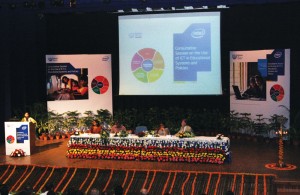 In a bid to create awareness, share ideas and experiences on the use of ICT in Education amongst key policy and government officials, academia and research industry, IGNOU’s Distance Education Programme- Sarva Shiksha Abhiyan (DEP-SSA) and Intel Corporation and civil society stakeholders organized a consultative session.
In a bid to create awareness, share ideas and experiences on the use of ICT in Education amongst key policy and government officials, academia and research industry, IGNOU’s Distance Education Programme- Sarva Shiksha Abhiyan (DEP-SSA) and Intel Corporation and civil society stakeholders organized a consultative session.
While inaugurating a consultative session on the use of ICT in Educational systems and policies at the campus in the capital, Prof. V. N. Rajasekharan Pillai, VC, Indira Gandhi National Open University (IGNOU) said, “We all have considered, formulated and implemented national and organizational policies, strategies and action plans relating to ICTs. There are priority issues faced by every one of us in becoming knowledge societies which focus on information and technology. But due to the dynamic environment, the challenges are becoming more acute and intense. This workshop shall explore such opportunities and priorities for deriving optimum benefits from ICTs as developmental tools in education.”
“Given the rapid pace at which the world is changing there is a need for our education systems to empower the next generation of learners to become productive and capable citizens of tomorrow. We are glad to be partnering with IGNOU and other key stakeholders from the central and state governments as well as Academia on this path of Education Transformation,” said Ashutosh Chadha, Director- Corporate Affairs Group, Intel South Asia during the session.
AICTE to implement NVEQF for technical education
Ministry of Human Resource Development has announced National Vocational Education Qualification Framework (NVEQF) programme for polytechnic and engineering colleges to transform Indian workforce to become knowledgeable, skilled and adaptable to the demands of new labor market.
Kapil Sibal, Minister of Human Resource development said , “ I am pleased to note that AICTE is planning to implement the NVEQF at the post-secondary level through the medium of Polytechnics and engineering colleges and has prepared curriculum content in a variety of skills with industry participation.”
The unique part of the vocational framework is that it will be integrated with mainstream education and thus provide students multi-level entry and exit options to enable them to seek employment after class XII. Any student under NVEQF can be sure that the institution is government authorised and nationally accredited and that the degree and other qualifications are genuine, said AICTE chairman S S Mantha.
The framework would link schools, vocational and university education qualifications into one national system. National Skill Development Council is in the process of launching the ‘national occupational standards’ supporting NVEQF.
Shiv Nadar University launched at Greater Noida
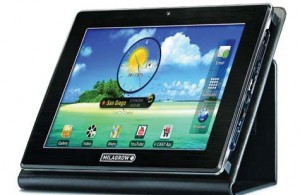 The Shiv Nadar Foundation has announced the launch of the Shiv Nadar University (SNU) at Dadri, Greater Noida in the National Capital Region. The Shiv Nadar University announced the launch of the School of Social Sciences & Humanities for the academic session 2012-13 and also the launch of its first Research Centre in Mathematics & Information Technology. The Research Centre will function as a centre for research collaboration with leading global institutions through the application of Mathematics and Information Technology. The University plans to launch the School of Business, the School of Communication and the School of Education in the near future. The University also announced the appointment of Dr M Gopal as Director of the School of Engineering and Dr Shubhashis Gangopadhyay as Director of the School of Social Sciences & Humanities.
The Shiv Nadar Foundation has announced the launch of the Shiv Nadar University (SNU) at Dadri, Greater Noida in the National Capital Region. The Shiv Nadar University announced the launch of the School of Social Sciences & Humanities for the academic session 2012-13 and also the launch of its first Research Centre in Mathematics & Information Technology. The Research Centre will function as a centre for research collaboration with leading global institutions through the application of Mathematics and Information Technology. The University plans to launch the School of Business, the School of Communication and the School of Education in the near future. The University also announced the appointment of Dr M Gopal as Director of the School of Engineering and Dr Shubhashis Gangopadhyay as Director of the School of Social Sciences & Humanities.
Texas Instruments, CORE Education join hands for STEMpower
With the launch of Texas Instruments (TI) Education Technology business in India, TI and CORE Education and Technologies Ltd (CORE) has announced that they are joining forces to bring a new way of teaching and learning math and science to middle and secondary schools throughout India. The joint effort combines TI’s education technology solution with CORE’s content, teacher education and support to form one integrated solution called STEMpower. Through STEMpower, TI and CORE will address teaching, learning and assessment needs in the classroom, in the lab, and in the real world.
| Ceeco launches ELearn’s Intelliclass eLearning Suite
With a vast experience in innovative technology solutions, ELearn offers a revolutionary concept combining the best ICT training tools, Smart School K-12 content and assessments. ELearn’s Intelliclass -an unmatched e-learning suite provides comprehensive top of the line hardware and software ICT solution for next generation classrooms. Intelliclass offers implementation of technology-enabled classrooms equipped with the best infrastructure including Digi-Annotate (a portable interactive device), 88 inches Projection Board, High Resolution WXGA Projector, Dual Core PC, UPS and a compact and powerful eduVOX Audio System. The high definition Smart School 3D and mapped content delivers in depth explanation of the latest CBSE Curriculum. The beautifully designed and thoughtfully constructed Intelliclass k-12 content, reviewed by education industry experts will definitely improve the student’s concentration in the class and help them learn the fun way. With the latest e-learning technology the focus is on a holistic and balanced education. Intelliclass e-learning solutions not only offer excellent academics but also include a range of extra-curricular activities thus encouraging the students to realise their full potential. The curriculum is regularly updated with a huge array of practice exercises, comprehensive quizzes and creative modules. |



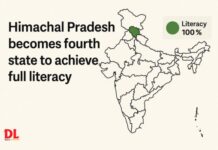
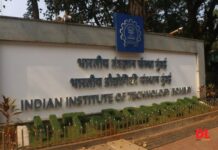

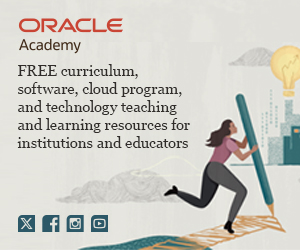

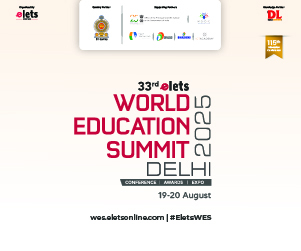


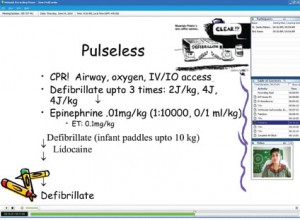 Although the number of medical colleges in the country has been increasing steadily and currently stands at 260, unfortunately there is an acute shortage of teaching manpower in the existing medical colleges. This shortage is in the region of 20–25 percent in most departments and as high as 33 percent in some departments, based on data published in the National Medical Journal of India. The shortages are particularly acute at the postgraduate level. Hence, while medical school training in India is phenomenal and world renowned in quality, speciality and super speciality training in India has been the purview of a limited number of institutions in India.
Although the number of medical colleges in the country has been increasing steadily and currently stands at 260, unfortunately there is an acute shortage of teaching manpower in the existing medical colleges. This shortage is in the region of 20–25 percent in most departments and as high as 33 percent in some departments, based on data published in the National Medical Journal of India. The shortages are particularly acute at the postgraduate level. Hence, while medical school training in India is phenomenal and world renowned in quality, speciality and super speciality training in India has been the purview of a limited number of institutions in India.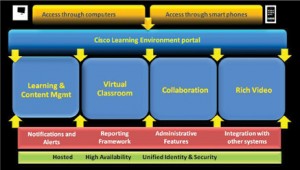

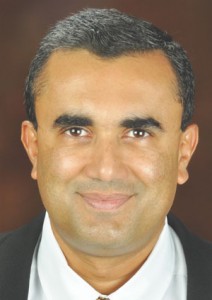
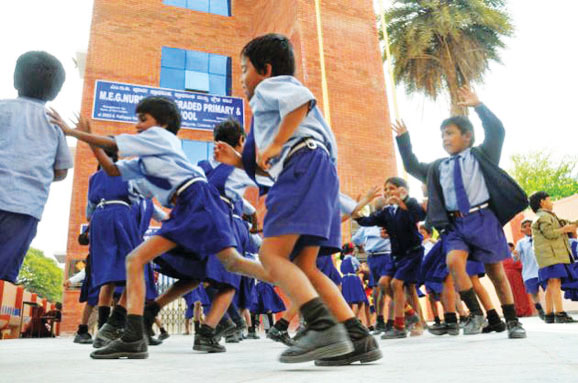
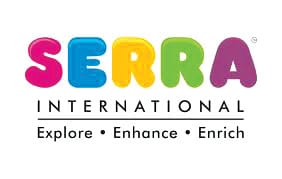 Serra International Pre-school has entered into a joint venture with EtonHouse International Education Group of Singapore to launch a chain of international pre-schools across India.
Serra International Pre-school has entered into a joint venture with EtonHouse International Education Group of Singapore to launch a chain of international pre-schools across India.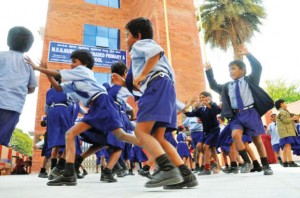 The Haryana government is going to implement the Right to Education Act (RTE) in state-run schools from November 11. The RTE Act will be implemented to ensure free and compulsory education to all children in the age group of 6-14.
The Haryana government is going to implement the Right to Education Act (RTE) in state-run schools from November 11. The RTE Act will be implemented to ensure free and compulsory education to all children in the age group of 6-14. GEMS Education has announced partnership with The United Nations Educational, Scientific and Cultural Organization (UNESCO) to undertake world’s largest leadership training programme, wherein 10,000 school principals will be trained globally.
GEMS Education has announced partnership with The United Nations Educational, Scientific and Cultural Organization (UNESCO) to undertake world’s largest leadership training programme, wherein 10,000 school principals will be trained globally. Zee Learn Ltd’s K-12 vertical is targeting 400-500 schools across the country in 5-7 years under the Mount Litera Zee School banner. The schools will be set up largely through the franchisee route while a considerable number will be management contracts and owned and operated institutions.
Zee Learn Ltd’s K-12 vertical is targeting 400-500 schools across the country in 5-7 years under the Mount Litera Zee School banner. The schools will be set up largely through the franchisee route while a considerable number will be management contracts and owned and operated institutions. Tree House Education and Accessories Limited, a company providing pre-school and K-12 educational services in India is now included in the BSE Small Cap Index post the latest quarterly review.
Tree House Education and Accessories Limited, a company providing pre-school and K-12 educational services in India is now included in the BSE Small Cap Index post the latest quarterly review.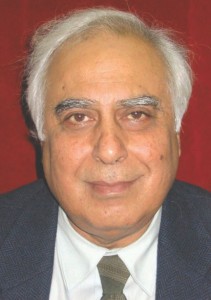 “There is a need for a sustained campaign to create awareness in every school, among those who need to be brought into school and among those who implement the Right to Education Act as to the various provisions of this Act,” stated by Shri Kapil Sibal, Union Minister for Human Resource Development at a meeting of State Education Ministers on the subject of community mobilization and public awareness for Right to Education (RTE). Shri Sibal expressed confidence that he would get support from the State Governments in this effort. Shri Sibal underlined that the Central and the State Government have to work together so that RTE does not falter.
“There is a need for a sustained campaign to create awareness in every school, among those who need to be brought into school and among those who implement the Right to Education Act as to the various provisions of this Act,” stated by Shri Kapil Sibal, Union Minister for Human Resource Development at a meeting of State Education Ministers on the subject of community mobilization and public awareness for Right to Education (RTE). Shri Sibal expressed confidence that he would get support from the State Governments in this effort. Shri Sibal underlined that the Central and the State Government have to work together so that RTE does not falter.
 Open and Distance Learning need to address issues on how to standardise competencies within the broad framework of RPL for placing a comprehensive educational system
Open and Distance Learning need to address issues on how to standardise competencies within the broad framework of RPL for placing a comprehensive educational system The need for giving emphasis on skill development, especially for the less educated, poor and out of school youth has been highlighted in various fora. The skill level and educational attainment of the work force determines the productivity, income levels as well as the adaptability of the working class in changing environment. Large percentage of population in India is living below poverty line. One of the important causes is lower percentage of skilled persons in the workforce.
The need for giving emphasis on skill development, especially for the less educated, poor and out of school youth has been highlighted in various fora. The skill level and educational attainment of the work force determines the productivity, income levels as well as the adaptability of the working class in changing environment. Large percentage of population in India is living below poverty line. One of the important causes is lower percentage of skilled persons in the workforce.
 Today’s test environment is more challenging than ever as pressure on increasing quality and meeting time-to-market continue to increase. Therefore, a sound foundation in computer networking is critical for success in many kinds of computer-based work and universities must produce graduates with solid foundation in computers and their applications. One way to achieve this is through interactive learning and teaching through the use of software packages like LabVIEW (Virtual Instruments) and Java/Visual Basic (Object Oriented Programming). This will also allow the student to have greater interaction with the subject matter and improve his/her skills in the use of number of applied engineering software packages.
Today’s test environment is more challenging than ever as pressure on increasing quality and meeting time-to-market continue to increase. Therefore, a sound foundation in computer networking is critical for success in many kinds of computer-based work and universities must produce graduates with solid foundation in computers and their applications. One way to achieve this is through interactive learning and teaching through the use of software packages like LabVIEW (Virtual Instruments) and Java/Visual Basic (Object Oriented Programming). This will also allow the student to have greater interaction with the subject matter and improve his/her skills in the use of number of applied engineering software packages.
 The discussions revolved round all the vital aspects of education in India. What should we now do to accomplish the goal of Universal Elementary Education (UEE) by the end of the Eleventh Plan? How do we improve achievement levels of children in elementary and secondary schools, especially state funded ones? What action is being taken by states to meet their enhanced share under SSA in the Eleventh Plan? What steps should be taken to increase the Gross Enrollment Ratio for higher and technical education from the present about 10% to at least 15% by the end of the Eleventh Plan? Despite increased outlays, we are still quite far from the goal of spending 6% of GDP on education, which has been reiterated in the Approach paper to the Eleventh Plan. How best can this responsibility be equitably shared between the Centre and the states? How to improve quality of higher education, especially in state-funded colleges and universities? How to maximise use of ICT, including EDUSAT to widen access and improve quality of education at various stages? The discussion also included many other aspects like minority education and vocational education in the country.
The discussions revolved round all the vital aspects of education in India. What should we now do to accomplish the goal of Universal Elementary Education (UEE) by the end of the Eleventh Plan? How do we improve achievement levels of children in elementary and secondary schools, especially state funded ones? What action is being taken by states to meet their enhanced share under SSA in the Eleventh Plan? What steps should be taken to increase the Gross Enrollment Ratio for higher and technical education from the present about 10% to at least 15% by the end of the Eleventh Plan? Despite increased outlays, we are still quite far from the goal of spending 6% of GDP on education, which has been reiterated in the Approach paper to the Eleventh Plan. How best can this responsibility be equitably shared between the Centre and the states? How to improve quality of higher education, especially in state-funded colleges and universities? How to maximise use of ICT, including EDUSAT to widen access and improve quality of education at various stages? The discussion also included many other aspects like minority education and vocational education in the country. States noted the need to quickly enter into tripartite MoU with ISRO and MHRD for proper utilisation of EDUSAT. All states which are yet to execute these MoUs,agreed to do so in the next two months.
States noted the need to quickly enter into tripartite MoU with ISRO and MHRD for proper utilisation of EDUSAT. All states which are yet to execute these MoUs,agreed to do so in the next two months.








